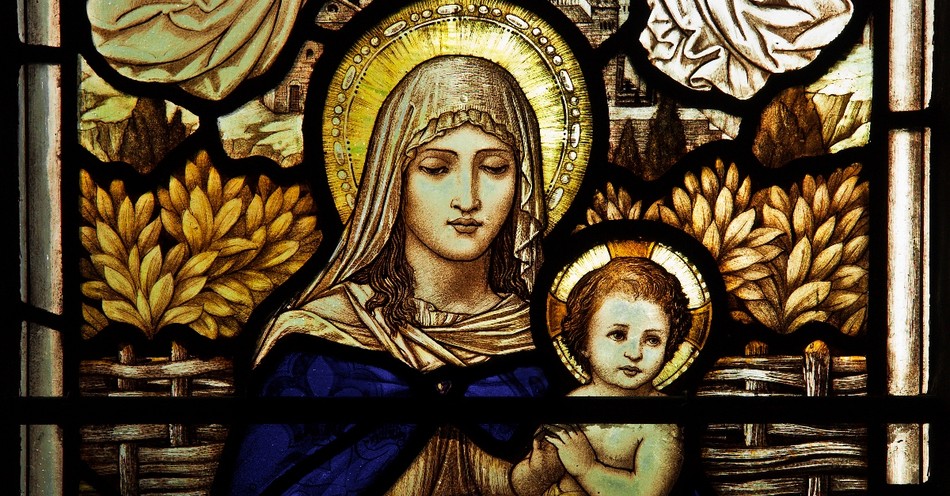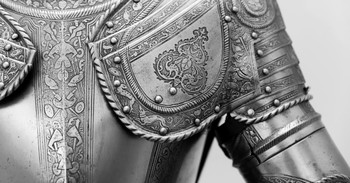Ask someone to name a famous Mary, and he or she will almost certainly mention “Mary, mother of Jesus.” She is perhaps the most famous “Mary” in history, even an object of worship for some. Who was Mary, mother of Jesus?
The Root of the Name Mother Mary
“Mary was actually called Miriam, after the sister of Moses.” Why do we call her Mary? Miriam is Hebrew, while Mary is a New Testament blend of two Greek names: Mariam and Maria. Both Miriam and Mary guarded God’s chosen leaders during infancy as worldly authorities sought to have them killed.
After Pharaoh ordered that “every Hebrew boy” be “throw[n] into the Nile” (Exodus 1:22), Miriam watched over her brother where he was hidden among some reeds (Exodus 2:4) and went to fetch a nurse (their mother) for the Pharaoh’s daughter (Exodus 2:5-7).
Mary, with Joseph, protected Jesus from another jealous king, Herod the Great. One meaning for Miriam/Mary is “wished-for child” and both women certainly cared for important children whose safety was under threat from murderous authorities.
Miriam’s name “belongs to a family of words [...] which suggest ‘bitterness,’” because, as an older woman, she was bitter towards Moses. There is no hint of jealousy or bitterness in Mary, mother of Jesus: she was worshipful, faithful, and also courageous.
Prophetic Roots of Mother Mary
Christians see parallels between Mary and her namesake Miriam which, in retrospect, reveals the prophetic nature of Moses’s birth and his life. The Christian sees that God selected two young women to look after the two men in Scripture who led Israel out of slavery to Egypt and sin, respectively.
The prophecy of Isaiah 7:14 foretold that a woman, such as Mary, would emerge one day to give birth to Israel’s wished-for child; their Savior: “Therefore the Lord himself will give you a sign: The virgin will conceive and give birth to a son, and will call him Immanuel.”
Mary, the mother of Jesus, “loved God and wanted to serve Him with all her heart.” Luke recounts how Mary was told by the angel that she would become the mother of Immanuel. “‘I am the Lord’s servant,’ Mary answered. ‘May your word to me be fulfilled’” (Luke 1:38).
Where Was Mother Mary From?
Jesus’ mother was probably “born in Nazareth […] during the reign of Herod the Great.” That reign lasted from 37-4 BC. She “spoke Aramaic, with a Galilean accent (Matthew 26:73)” and also “had contact with a multilingual world” where soldiers spoke Latin, Greek was the language of business and education, and Hebrew was the language of Jewish religious life.
She was part of the peasantry, which included skilled tradespeople, but which faced “a triple tax burden: to Rome, to Herod the Great and to the temple.” Typical family homes consisted of “three or four houses of one or two rooms each [...] built around an open courtyard, in which relatives shared an oven, a cistern and a millstone for grinding grain, and where domestic animals also lived.” Mary would have spent most of her time doing household work including strenuous physical chores.
Mother Mary and Life with a Family
Mary would have been married as early as 13 “in order to maximize childbearing and to guarantee virginity.” Mary lived with Joseph, Jesus, and also “James and Joseph and Judas and Simon” plus sisters who were not named in the Bible (Mark 6:3).
She was a tough woman “capable of walking the hill country of Judea while pregnant, of giving birth in a stable, of making a four or five-day journey on foot to Jerusalem once a year or so,” of sleeping outside “and of engaging in daily hard labor at home.” She was probably illiterate since women rarely learned to read and write during this time, a period in which oral transmission of information was typical.
She was taught to expect the promised Messiah. “As a Jew, she had been learning about biblical prophecy her entire life.” She became “part of the fulfillment of God’s ultimate plan” when the angel declared, “You will conceive and give birth to a son, and you are to call him Jesus. He will be [...] Son of the Most High” and “will reign over Jacob’s descendants forever” (Luke 1:31-33).
In Luke 1:54-55, Mary declared, “He has helped his servant Israel, remembering to be merciful to Abraham and his descendants forever, just as he promised our ancestors.” Her song, said Dietrich Bonhoeffer, is “the oldest Advent hymn.”
Mother Mary and Life with Jesus
We don’t know much about Mary because the gospel is Jesus’ story, not hers. We might surmise that before Jesus’ resurrection, she must have been confused. After all, Jesus began His ministry by offending the people in the synagogue at Nazareth (Luke 4) and He continually upset the Pharisees.
Mary believed her son was insane: “When his family heard about this, they went to take charge of him, for they said, ‘He is out of his mind’” (Mark 3:21). Jesus said, “I did not come to bring peace, but a sword. For I have come to turn “‘a man against his father, a daughter against her mother, a daughter-in-law against her mother-in-law — a man’s enemies will be the members of his own household’” (Matthew 10:34-36).
While this does not point to animosity between mother and son, we see that blood did not determine family for Jesus. Exodus 20:12 says, “Honor your mother and father.” Jesus said “‘Who is my mother, and who are my brothers?’ Pointing to his disciples, he said, “Here are my mother and my brothers. For whoever does the will of my Father in heaven is my brother and sister and mother’” (Matthew 12:48-50). One can imagine how hurt or even angry she might have been initially.
God’s family was broadened by adoption beyond ethnic boundaries. Paul speaks frequently of adoption by faith. “The Spirit you received brought about your adoption to sonship” (Romans 8:15).
The Apostle John wrote it this way: “To all who did receive him, to those who believed in his name, he gave the right to become children of God — children born not of natural descent, nor of human decision or a husband’s will, but born of God” (John 1:12-13).
For a mother, who might have believed she should hold a special place in her son’s heart, the equality of Jesus’ love might have hurt deeply at first.
Later, Luke records how she “treasured up” what the shepherds reported to them (Luke 2:19). She recalled how, after losing Jesus and finding him at the temple in Jerusalem, obediently learning about the Father, Jesus was likewise obedient to his earthly father. She “treasured up” this experience in her heart also.
Death with Jesus
“Mary was the only person to be present with Jesus at his birth and his earthly death.” His earthly father, Joseph, presumably died because he is not mentioned after Luke’s accounts of Jesus’ childhood.
“When Jesus saw his mother there, and the disciple whom he loved standing nearby, he said to her, ‘Woman, here is your son,’ and to the disciple, ‘Here is your mother.’ From that time on, this disciple took her into his home” (John 19:25-27).
By these words, we know that Jesus cared deeply and personally for His mother, and we see that Mary witnessed the last hours of Jesus’ life. “At that time she was probably close to 50 years old, well beyond the age at which most women in that era died.” One can only wonder at the torture she experienced watching her eldest child die, and whether the angel’s words from three decades earlier haunted or comforted her.
She might have been one of the women at the empty tomb, but these women have not been definitively identified. “Mary Magdalene, Joanna, Mary the mother of James, and the others with them” encountered angels at Jesus’ empty tomb and, “told this to the apostles” (Luke 24:10), but Mary mother of Jesus is not specified.
Mary was still alive when the new church emerged; Luke tells us “she was in the upper room in Jerusalem with the 11 remaining apostles” and a group of over 100 people as recorded by Luke in Acts 1:14,15.
After that time, history says no more about Mary the mother of Jesus. She lived through every gamut of emotions a mother can face and was even loyal to stay with her son as he died on the cross. Memories of young Jesus were of powerful comfort to her while she waited, as we wait, to be with Him again.
©iStock/Getty Images Plus/RedletterW




